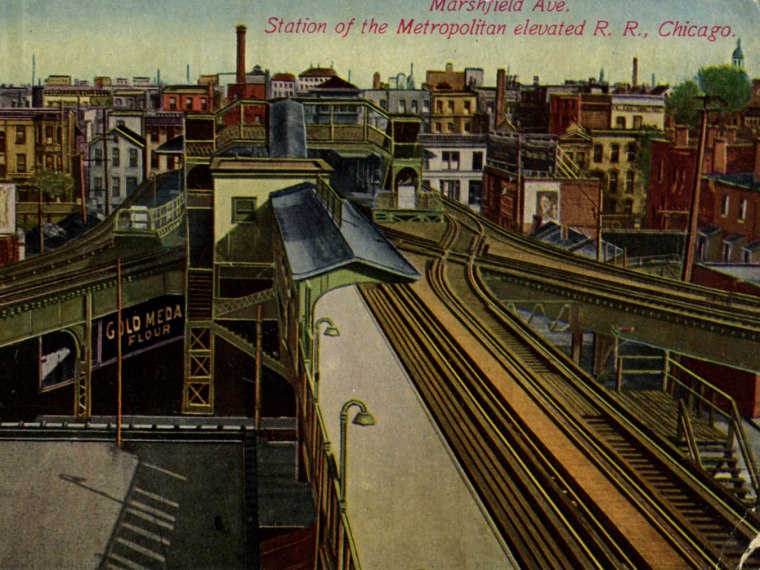By 1913, additional lines included the Ravenswood and Evanston lines. The now abandoned Stockyards, Kenwood, Normal Park and Westchester Branches had been completed. Through routing of north-south trains via the Loop also began. Although nominally operated by different companies, the different lines were now under the common control of an elevated trust. Samuel Insull, the head of Commonwealth Edison, exercised general control. This structure was formalized in 1924 when the Chicago Rapid Transit Company was created to operate all of the lines. The Library owns a number of biographies of Insull.
The Electric City details how Insull’s companies, including the Chicago Rapid Transit Company, went bankrupt in the 1930s. The elevated then operated under the control of a trustee until 1947. As part of a Depression-era public works program, the Federal government gave money to build two subways in the downtown area. The State Street (Red Line) subway was opened in 1943.
In 1947 a new public entity, the Chicago Transit Authority, bought the system and embarked on a new round of changes. Skokie (Yellow Line) service was discontinued in 1948 and started up again in 1964. The Dearborn Street (Blue Line) subway was opened in 1951. The 1950s also saw the closing of the Humbolt Park, Kenwood, Normal Park, Stockyards and Westchester Branches. The Garfield Park Branch was replaced with a surface level route in the Congress Expressway median. These defunct lines are shown on this 1936 Chicago Rapid Transit map.

New lines continued to be added with the construction of the Red Line in the median of the Dan Ryan Expressway(1969), the extension of the Blue Line from Logan Square to O’Hare in the median of the Kennedy Expressway(1970-1984) and the opening of the Orange Line to Midway on underused railroad right-of-ways (1993.)
As Dennis McClendon points out in The Encyclopedia of Chicago, currently most of the system is at or below ground level, but Chicagoans still call it the L. Over its 122 years of existence, the L has provided billions of rides. It has been a primary force in filling the Loop with workers and shoppers. It also jump-started development of Chicago's outlying areas.
For more information see the booklist.




Add a comment to: The L, Continued: Technology That Changed Chicago